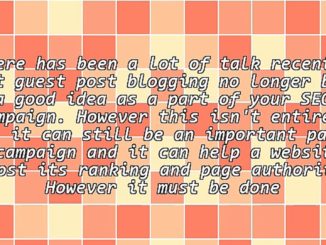
We all know that consumers go online to research for products they intend to purchase. This holds true for healthcare and pharmaceutical drugs as well. According to Princeton Survey Research Associates, 80 percent of adult internet researchers (about 93 million Americans) searched for at least one of the 16 major health topics online.
Blogging is an online platform that allows pharma companies to share product information more frequently than regular websites. This sharing of information can be done in a controlled environment that could ensure regulatory compliance when necessary. Patient education and informational articles provide value to online viewers who explore the internet for insights on specific health topics.
Before a pharma company decides to invest its efforts in blogging, it must spend time doing research, understand who their target readers are, locate a need and then find opportunities to fill in the gaps where information might seem inadequate or not readily available.
And yes, in case you were wondering, there are FDA (Food and Drug Administration) restrictions and guidelines for content in pharma-focused blogs as there are for any pharma website. Direct-to-consumer (DTC) compliance must be followed. For example. information regarding a product must be presented in a balanced manner and should weigh the risks and benefits of the products equally.
Bearing in mind these restrictions, pharma companies can opt for a branded or unbranded blog.
1. Branded Blogs
Branded blogs increase brand awareness, position the company as a campaigner in the disease segments, increase search engine ranking for keyword phrases and help create awareness in the target community about a specific disease state or product. It is a place where information seekers can find information and allow influencers to share the content in online forums.
However, there is a downside to branded blogs. These blogs need to include Important Safety Information (ISI), which is important, but can clutter and distract the reader. It can also reduce the reader’s trust because the site appears as just another marketing avenue.
2. Unbranded Blogs
Unbranded blogs have fewer restrictions in the creation of content and can potentially add more value. Such blogs provide a platform for open discussion of a disease state, lifestyle conversation and empowering stories to share within the community. It is a more authentic, unbranded storytelling that allows the organization’s voice to be heard, influence online sentiment and build keyword traffic.
Here are a few examples of unbranded pharma blogs.
Blogs also build followers as they are perfectly paired with social media platforms like Twitter and Facebook. Every post done on a blog sends an alert via email to its subscribers and social networks get notified of every published blog post which can help drive more web traffic.
A well-maintained blog builds the reader’s confidence in you, your company and your brand. It helps forge a strong connection with the reader and encourages the audience to return for relevant information. The process of blogging adds fresh content on your web page and allows for sharing of information within social communities. This generates leads to the website that in turn raises credibility and boosts search engine rankings.
Blogging is no longer just a hobby. It has serious business potential that can attract big pharma players. It is an influential tool with endless possibilities for today’s businesses and should be included as part of a sound marketing plan.
Proudly WWW.PONIREVO.COM
by Dr. Jonathan Elias D’Souza, PhD A.M.



